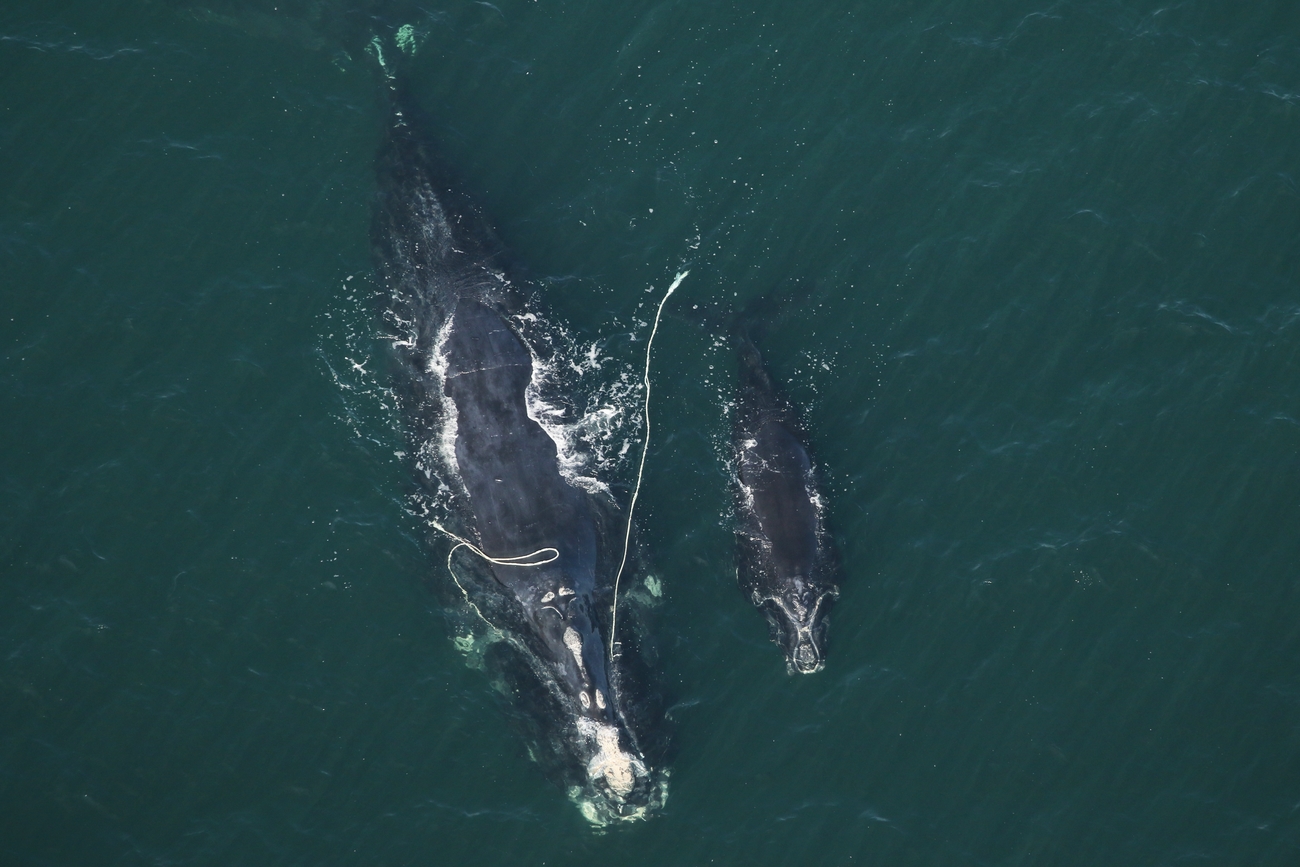Saving the North Atlantic right whale - North America
Don't fail our whalerenewed urgency to protect right whales after newly released estimates show population remains stagnant
renewed urgency to protect right whales after newly released estimates show population remains stagnant

Conservation tactics to protect the species have fallen short of ensuring its survival
(Washington, DC - 24 October, 2022) The official population estimate of 340 individuals released today by the North Atlantic Right Whale Consortium, underscores the continued vulnerability of this critically endangered species. Additional actions by governments, industry, conservation groups and other stakeholders are needed swiftly to pull the species back from the brink of extinction. The new population estimate indicates the species is still heading in the wrong direction. A separate recent study also suggests that just 72 reproductive females remain, a demographic that is essential to the recovery of this dwindling population.
In 2017, the National Oceanic and Atmospheric Administration (NOAA) declared an Unusual Mortality Event (UME) due to the elevated number of mortalities in the species in US and Canadian waters. Vessel strikes and entanglement in fishing gear continue to be the primary causes of death and injuries to right whales. Earlier this month, NOAA officially added 36 whales with moderate and severe (sub-lethal) injuries to the UME, alongside the previously included 34 dead and 21 seriously (lethally) injured whales. Now a total of 91 individual right whales are included in the UME, which represents approximately 27% of the current population estimate. These latest numbers, which reflect a more accurate UME count based on new, peer-reviewed scientific and veterinary protocol, appear to indicate that actions taken to date to save the North Atlantic right whale have proven insufficient to stem the species’ slide toward extinction.
While no mortalities were observed over the most recent period, threats including an overall decline in health exhibited by shrinking physical size, increased calving intervals, reduced calf survival, and a decreasing number of reproductive females are troubling signs for a population that once numbered in the tens of thousands prior to the advent of commercial whaling.
According to IFAW veterinarian Dr. Sarah Sharp, “The loss of even one individual represents a major blow to the recovery of the species as a whole. Take for example, the case of the right whale mother known as Snow Cone. Suffering from chronic entanglement for over 18 months, Snow Cone shocked the scientific community by successfully giving birth while entangled. She was later spotted without her calf, and the latter is likely to have died. Snow Cone herself was recently spotted in dire physical condition with a new entanglement that will very likely end her life. These latest population numbers confirm that the species continues to teeter on the verge of functional extinction and current measures to save it are falling short. Nevertheless, there is hope on the horizon. Solutions do indeed exist. From expanded vessel speed restrictions to regulation of fishing and implementation of on-demand gear—further mortalities are preventable if aggressive, well-targeted risk mitigation measures are implemented immediately.”
IFAW and other stakeholders are working to meet the needs of whales and a healthy ocean ecosystem by partnering with fishermen and mariners to advance pragmatic solutions.
“Ensuring the right whale survives and protecting the livelihoods of fishermen are fundamental,” said Kathleen Collins, Marine Campaigns Manager for IFAW. “It is not a question of ‘either or’. IFAW takes a multi-disciplinary approach to achieving both. Lasting solutions must be based on ensuring collective best interest, mutual collaboration and a willingness to advance existing technology to achieve long-term change in and on the water. Whales and fishermen thriving together—that is the end game. Today’s numbers and challenges remain grim, but we need to get there.”
ENDS
About The International Fund for Animal Welfare (IFAW):
The International Fund for Animal Welfare (IFAW) is a global non-profit helping animals and people thrive together. We are experts and everyday people, working across seas, oceans, and in more than 40 countries around the world. We rescue, rehabilitate, and release animals, and we restore and protect their natural habitats. The problems we’re up against are urgent and complicated. To solve them, we match fresh thinking with bold action. We partner with local communities, governments, non-governmental organizations, and businesses. Together, we pioneer new and innovative ways to help all species flourish. See how at ifaw.org.
About The North Atlantic Right Whale Consortium:
Started in 1986 as a collaborative data sharing group, the North Atlantic Right Whale Consortium (NARWC) has grown to include more than 200 individuals from various research and conservation organizations, shipping and fishing industries, technical experts, U.S. and Canadian government agencies, and state and provincial authorities, all of whom are dedicated to the conservation and recovery of the North Atlantic right whale. The Consortium is internationally recognized and has been identified as a model for establishing other species-related consortia.
Press Contacts:
North America
Rodger Correa
US Communications Director
m: 202.834.6637
Related content
Every problem has a solution, every solution needs support.
The problems we face are urgent, complicated, and resistant to change. Real solutions demand creativity, hard work, and involvement from people like you.